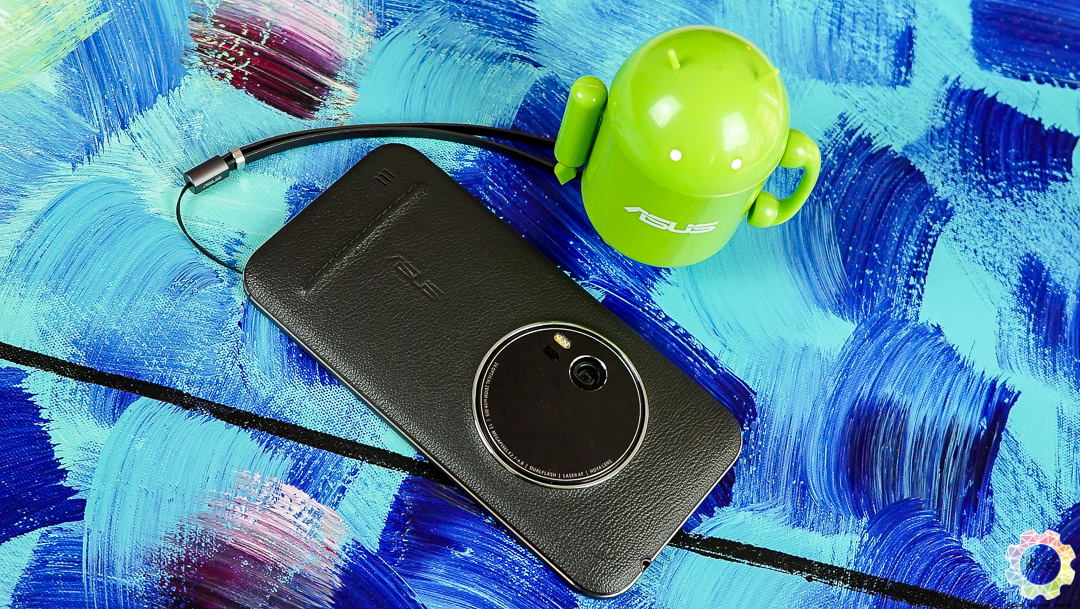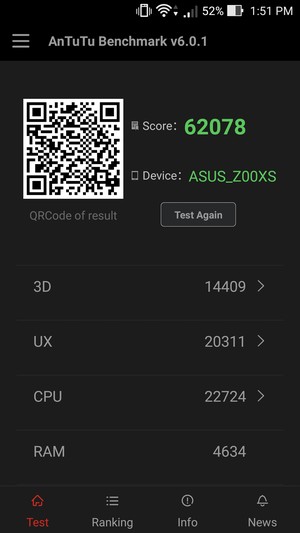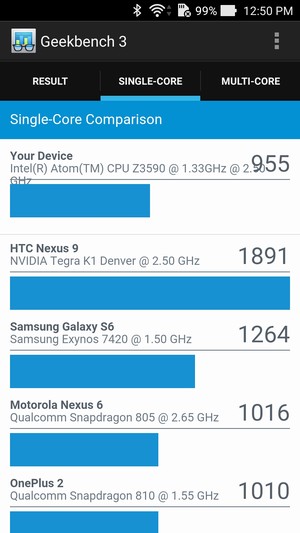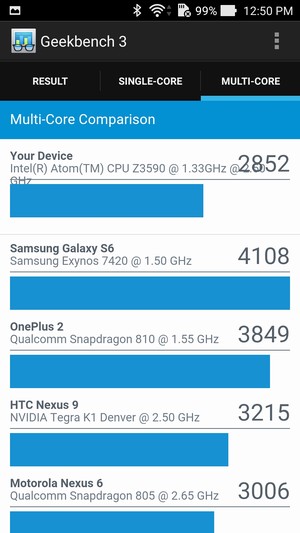I remember the Nokia N93 back then, it was the most iconic smartphone that not only sports a really interesting clamshell design, but it also has a camera with an optical zoom. Years later, we finally have the Nokia 808 Pureview and Lumia 1020 that sports Lossless Digital Zoom and that’s pretty much about smartphone cameras already, manufacturers have mostly focused on putting the best camera sensors on their flagship devices and getting closer to your object from far has slowly become a forgotten feature. The Zenfone Zoom is a device that attempts to bring back the optical zoom feature that has been missing on smartphone cameras today, snap on the most powerful hardware internals from the heroic Zenfone 2, and the phone becomes one ultimate device that anyone should own, but is that really so? We find out.
Design and Hardware
On first impressions, the Zenfone Zoom thankfully has a very distinguishable design from the rest of the Zenfone family, the spin effect frame remains an iconic design below the capacitive buttons. Unlike other Zenfone siblings, the Zenfone Zoom is solidly built with an aluminum alloy body, coupled with a very high quality fine leather back cover, this is the most premium looking Zenfone that I’ve ever seen. ASUS has taken hardware design seriously on the phone as well, since the phone is intended to be a point and shoot camera, there’s a dedicated picture and video button on the right side, the volume keys have been labeled with ‘W’ and ‘T’ for the camera’s zoom control, and finally, a lanyard hole for users to slot in a lanyard to prevent the phone from dropping, ASUS does provide a rather nice looking leather lanyard out of the box.
On the performance department, ASUS has equipped the Zenfone Zoom with Intel’s fastest Atom Z3590 SoC mated to 4GB of RAM, there’s 128GB of internal memory and you can even further expand it with a MicroSD card. The phone has a 5.5-inch Full HD display that looks bright and beautiful, touch response is great so that you will love to text on the phone. In addition, ASUS has also been attentive to the phone’s audio performance and has included the Bluetooth apt-X codec for lossless wireless streaming. ASUS has sadly kept the phone’s battery size at 3000mAh, which isn’t a favorable size given for its power hungry hardware internals, there is however, support for fast charging so just keep a fast charger handy if you ever run out of juice.
ASUS has once again done pretty well in the design and hardware department, the Zenfone Zoom may be a hefty device, but it has a hardware package that will appeal to a power user especially in the storage department, where the company has been very generous of offering a substantial amount of space for storing almost anything.
Software
We are all familiar with ASUS software and I have absolutely no problems in using it, the Zenfone Zoom continues to offer a number of bloatware out of the box and I have totally removed them on my first time setup. One thing I really love about ZenUI is the continuous update and support from ASUS on Google Play, even though there could be unnecessary features, it is always good to see great software support from a device manufacturer. The Zenfone Zoom’s hardware unfortunately performs rather average, as compared to Qualcomm powered siblings or even the older Zenfone 2, there is noticeable lag and delays in response after some extended usage, RAM management has also been pretty bad as it easily hits below the 1GB mark, I would assume that the memory leak issue on Android 5.0 to be the culprit and I wished ASUS could have shipped the phone with Android 5.1, in other ways the Android Marshmallow update is seriously way overdue.
Things are not entirely bad with ZenUI as I have to commend the ASUS folks for implementing a very complete software experience, every system app is filled with features that usually requires a third party app. For instance, the phone dialer app has a pretty decent call blocking feature and apps can be locked from unauthorized access with CM AppLock. Lastly, ZenUI has a very decent set of free and paid themes to beautify the software experience, users are also able to customize system fonts, app drawer grid size and get access to a collection of useful widgets. ZenUI is pretty, but ASUS seriously need to put some work on improving its reliability.
Camera and Imaging Performance
Many of us have been looking forward to the Zenfone Zoom’s main camera as ASUS has emphasized this as an ultimate device that can substitute your point and shoot camera, the 13-megapixel camera has a 10-element HOYA lens arrangement, optical image stabilization and laser autofocus. While these features sound impressive on paper, what ASUS didn’t specifically mention would be the variable aperture value of f/2.7-4.8, 28mm-84mm focal length and a relatively small 1/3.06″ sensor size, these technical figures are not optimistic when it comes to today’s smartphone photography standards, which technically means that pictures will only look good with sufficient lighting conditions and you can’t take wide angle photos with this camera module, check out the sample images above.
Apart from the mediocre camera hardware, ASUS have not optimized the camera software properly, the viewfinder has an inconsistent frame rate and it drops significantly in low light, shutter speed e can be slow at times which easily causes blur on fast moving objects, focusing speed is thankfully fast and there were times it wasn’t able to focus on my subjects properly. Lastly, I am disappointed with the phone’s video recording capabilities, there’s simply no way to adjust recording frame rate, no 4K video support and videos are sadly recorded in a low bitrate.
The Zenfone Zoom’s camera performance is overall an underwhelming one, the camera hardware isn’t entirely bad but it could have fared better with a more optimized software, and that’s really a deal breaker for some.
Benchmarks, Battery Life and Network
I’ve always got a love and hate relationship with Intel’s Atom SoC, they do look appealing on paper however when it comes to real world usage, the promised performance and capabilities are neither here nor there. Take the Intel Atom Z3590 on the Zenfone Zoom for instance, it is a powerful processor that has a really fast 2.5GHz clock speed and a reputable 2MB L2 cache, coupled with 4GB of LPDDR3 1600 RAM, this is a very powerful hardware package for smartphones. Unfortunately, the Zenfone Zoom barely hits the expected benchmark score range of current flagship devices, particularly in the Geekbench test, you will find the Zenfone Zoom’s performance merely hitting the score of two year old Snapdragon 800 SoC, the processor is still a powerful one but I can’t help feeling disappointed with Intel ruining the Zenfone Zoom as a flagship smartphone. On a side note, the device heats up terribly after some extended time of usage. Hence at the end of the day, you know who to blame. Cough…Intel…Cough…
Battery life hasn’t always been the Zenfone’s strength apart from the Zenfone Max, the Zenfone Zoom’s battery life is neither good nor bad, one full charge will definitely get you through your 8-hour working day if used moderately, I’m glad that the phone supports fast charging and it will generally work with most 9V chargers.
Ever since the Zenfone 2, ASUS phones have never disappoint in cell reception and speakerphone quality, the Zenfone Zoom delivers strong 4G LTE signals all the time and has impressive speeds over WiFi connection, callers have reported a very clear voice from my end and I love the smooth and crisp volume coming from the speakerphone.









